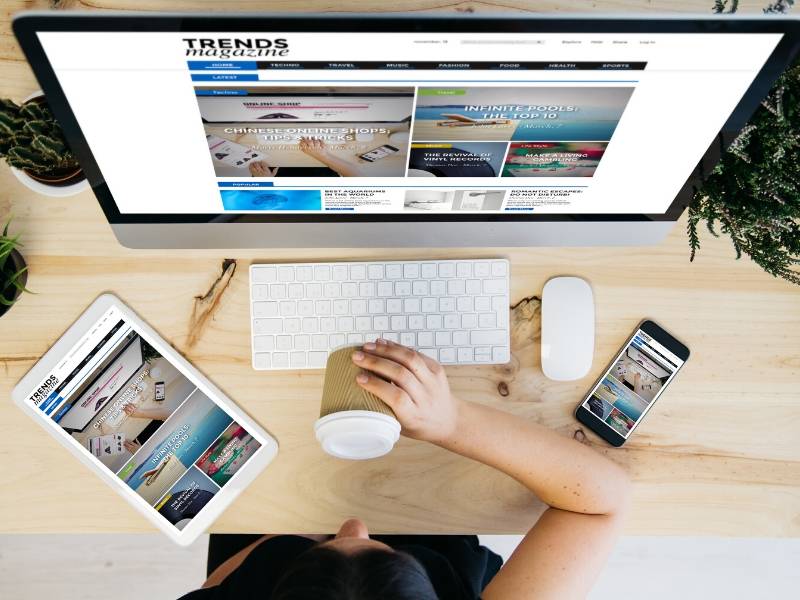
Designing your own website can be very daunting, especially when you lack experience. Read on to get tips on what web design entails and what the best way is to implement it.
Check your site in all of the different browsers. If you just check it from you personal computer, what you see may be vastly different from what others see. Make sure that your site is compatible with all popular browsers. You will want to have a person using a different computer operating system check on your site as well.
Ensure your site can pass the NoScript test. Try downloading the Firefox extension and activating to make sure your website is readable. When your site is just a blank page, you have a problem.
To help design an attractive looking website, use interesting photos that you have taken. This will help your website look great and offer a user-friendly approach. Those pictures can lead to a lot more post views per visitor.
Try writing a good “About Us” page. Most websites don’t have very interesting copy in this area. Make yours exciting and interesting! Let people know about your background and experience, tell them how you started designing websites and show them examples of your achievements.
Try using readable and professional-appearing fonts. The font type on a website is a quick indicator of how professional it is. Overly ornate or obscure fonts should be avoided, as they may not display properly on site visitors’ computers. If your website calls for a font that your visitors do not have, a default font will be substituted. Doing this can make it look even worse.
Web Design
The more time you spend working on your site, the easier web design will become. Try some easy web pages with C+ and HTML to learn the basics. Practice is one of the most reliable ways to improve web design skills; start practicing early and often to get the maximum benefit.
Proofread everything before publishing. It should be easy for people to read. With errors, you will risk looking unprofessional.
If you want to be a professional web designer, you need to set up a nice office. Limit exposure to distractions, organize and make the space as efficient as possible. Set up your work space for optimum efficiency with everything you need right at your fingertips. This will make working on your website much easier.
It’s important to do research when you design a website. Be sure to research your particular niche in order to reach the audience you want. Think of how you can create your site to reach your target audience. This makes designing your website very efficient.
When starting out, limit your content. Don’t do more than you can handle or you might wind up posting stuff that doesn’t make sense.
Steer clear of captchas. Captchas can trigger a negative response from a viewer when it makes them perform the task just so they can view a basic webpage. Most visitors will leave a webpage that requires too much personal information or the completion of difficult tasks.
Be certain that your design isn’t too much like the designs of other websites in your niche. Look at competitors’ websites to ensure that you haven’t accidentally made a similar design for your site. Having the same boring website as everyone else won’t differentiate your brand from others. You don’t want to be generic!
Practice time management when building a site if you wish it to be completed any time soon. It can be helpful since building a site requires many small tasks. If you procrastinate, those tasks will stack up quickly. Take care of tasks when they pop up.
Having some unused space within your site is an excellent design feature. Do not fall under the illusion that your site should be completely filled with information. Blank space makes your site easier to read and navigate: your visitors will enjoy viewing your site if they do not feel overwhelmed by the quantity of information on each page.
If you are going to feature advertisers on your website, keep them small and not huge or distracting. People should feel comfortable visiting your site instead of bombarded by ads. Adding too many advertisements, or ones that are too large, can make your page come across as spammy.
Search Box
You should not only place your search box close to the top of the page, but should allow visitors to type 27 or more characters into the box. Be sure that the search button is labeled “search”, rather than “go or “submit.” Taking these steps ensures that visitors can find and use the search box easily so that they can find whatever they are seeking.
Seek out offbeat inspiration as you design your own site. There are great sources of inspiration on TV, in magazines or the local mall. There are a lot of new ideas just waiting for you, and these can lead to a unique website that will have potential customers clamoring for your services.
When it comes to developing an error page, be informative. Generic errors provide no information to the user. By designing an informative error page, your visitor will understand why they were taken to the error page.
Make sure your logo is on every page. This gives a coherency to each your web pages. Additionally, it helps to create brand recognition for your visitors. Make a logo that represents what your company stands for.
When deciding on an appealing domain name for your website, look into auction sites such as Sedo. You will be able to find many wonderful domain names that either are for sale, abandoned or have already been sold.
Web design can be an exciting means to reach your desired demographic. If you learn to design websites the right way, it will really help you promote your products and services. Try using these tips to succeed.